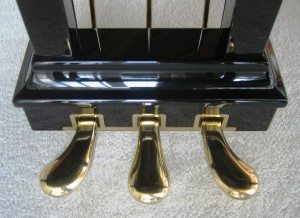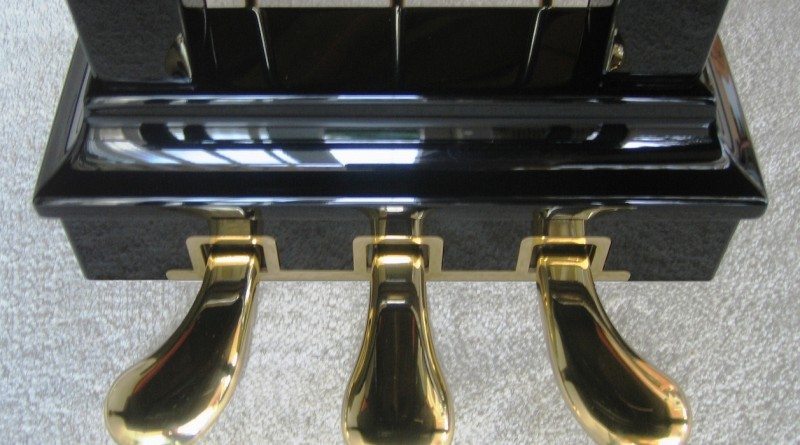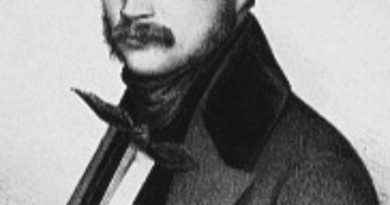How to Use the Pedal on the piano
The pupil has now advanced far enough to make a moderate use of the pedals. Beginners and even young players should not use it. There are usually two pedals attached to a piano. That to the right is generally called the “loud pedal,” but this is an improper name, for the pedal is not designed to strengthen the tones, but simply to prolong them.
Let the teacher open the lid of the piano and explain to the student the operation of the hammers and dampers. As the hammer strikes the key, the damper is removed from the strings and remains in that condition as long as the finger presses down the key.

When the finger is removed from the key, the damper falls and all the vibrations cease. According to this principle only keys that lie within the reach of the hand can be kept sounding together. By the aid of the pedal, however, all dampers are removed from the strings and remain in that condition as long as the foot presses down the pedal. By this means, the most distant tones can be made to sound together.
The piano pedals
Many students imagine that this pedal is to be used for the purpose of strengthening tones. Such is not the fact.
Let the teacher strike a chord continuously and that with equal force, using the pedal, and then again discontinuing its use.
This will demonstrate the lesson that, while through sympathetic vibrations of all strings there may be greater volume of sound, yet in reality there is no decided increase in strength. Now let the teacher strike the same chord alternately loud and soft without using the pedal. This teaches the lesson that strength of tone can only be secured through greater force of touch.
Next use some gentle passage, or if preferable the same chord, playing it softly with the loud pedal, showing that the “loud pedal” and soft playing are not incompatible. In fact, some of the finest effect produced by players is through playing piano with the use of the loud pedal.
This teaches the lesson that when a forte mark occurs in a piece of music; it does not signify the use of the loud pedal, but rather a greater display of hand or wrist power. So also the piano mark does not exclude the use of the pedal. The piano mark often stands by the side of the word Pedal or Ped., which indicates its use. The following sign indicates its discontinuance or release.
Some Important Tips on How to Use the pedal on the piano
Only certain tones produce a concord when sounding together, others produce discords. For instance, the chord C, E and G, sound pleasing to the ear, no matter if the several tones are doubled or trebled, no matter which stands below and which above. As long as this chord continues, the pedal may be used, though a too lengthy use of the pedal even with one chord may be faulty.
The pedal may also be used with broken chords, as for instance when they are written in this wise: etc. Such a succession of tones may reach over many octaves. As long as they comprise C, E and G, they produce a concord and the pedal may be used with them.
When the chord C, E and G is, however, followed by another, as for instance G, B and D, the pedal must first be released before striking the last named chord, for the chords of C and G when heard together make a discord. What been said concerning the broken C chord also holds good for the broken G chord, etc.



